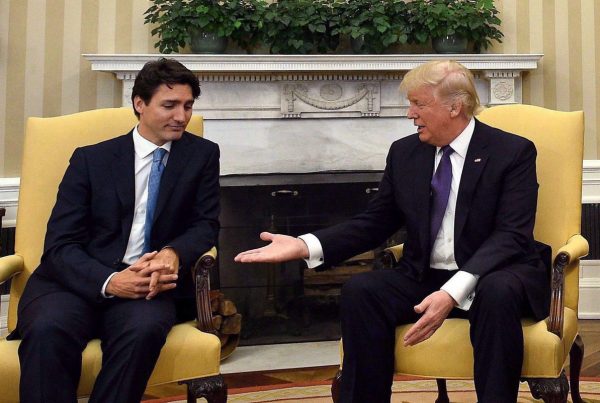The way to break the logjam on Gateway is to turn it from an outsiders’ project resented by mistrustful first nations along the route into a full partnership between an industry with expertise and capital and newly empowered aboriginal people and governments. Read my latest op-ed co-authored by Ken Coates in The Globe and Mail below:
The way to break the Northern Gateway logjam: aboriginal equity
By Brian Lee Crowley and Ken Coates, The Globe and Mail, January 3, 2013
The bitter debate over the Northern Gateway oil pipeline project shows Canadian policy-making at its worst.
A piece of nationally significant infrastructure, the project is currently mired in a toxic mess, assailed by environmentalists, targeted by vote-hungry B.C. politicians and publicly challenged by many first nations. You could be forgiven for feeling a dreadful sense of déjà vu.
In the 1970s, an ambitious plan was mooted for a natural gas pipeline down the Mackenzie Valley. Aboriginal people and environmentalists protested. Justice Thomas Berger was named to head an inquiry that galvanized opposition to the pipeline, recommending that it be delayed until aboriginal people were ready to participate fully.
Eventually, companies created new aboriginal partnership models. Aboriginal communities and governments grew more familiar with the project and innovated by becoming equity partners. While some opposition remained, most in the region supported a pipeline that promised jobs for the North and revenue for aboriginal governments.
But in an object lesson in the perishable nature of opportunity, by the time the project was finally approved, northern gas was no longer competitive with low-cost shale gas closer to markets. The opportunity now appears lost for a generation. If we don’t want the same to happen in our efforts to get Canadian oil to the West Coast, we need to learn the lessons of the Mackenzie Valley.
For the Inuvialuit (Inuit of the Western Arctic) and the first nations of the Mackenzie Valley, the pipeline was an unprecedented opportunity. The combination of the pipeline, modern treaties and self-government held out the prospect of overcoming generations of paternalism and poverty. Equity investment in the pipeline, secure revenue and local jobs were precisely the solutions aboriginal people sought to their problems. Delay put paid to those opportunities for decades to come.
A similar situation is unfolding along the Northern Gateway route. The opportunity is huge. As Justice Berger said in his inquiry’s final report, location is a natural resource. Northern British Columbia’s location matters because our oil is more valuable if we can get it to energy-hungry Asian markets. And Northern B.C. is the logical route to tidewater. But unless we respect and build on aboriginal aspirations, the fate of the Mackenzie Valley beckons.
Numerous options are being floated: rail to the West Coast, a new railway through Yukon to Alaska, the reversal of existing pipelines to Eastern Canada and more. None are as timely, efficient or market sensitive as the Northern B.C. route. For those not viscerally opposed to oil and pipelines, Northern Gateway is the best answer.
Without first nations’ willing participation, however, it’s extremely unlikely to succeed. That’s not a bad thing. First nations are deeply concerned about environmental risks; their engagement will help ensure the highest standards of safety, security and emergency responsiveness. They also know only too well that properly managed resource developments, including pipelines, offer the best solution to the employment and governance challenges they face. First nations have a judicially and politically recognized voice now in resource development, and they’re using it with increasing effectiveness.
The recent indication by the Haisla, on whose traditional territory the pipeline terminus would be built, that they’re open to discussions is emblematic of the cautiously entrepreneurial yet environmentally sensitive approach that first nations are now taking. Enbridge and governments are facing tough bargainers all along the Gateway route, as they should. But what’s needed now is to find the right way to make aboriginal people full participants in development from the outset, not an interest group to be placated once plans have been made.
The way to break the logjam on Gateway, therefore, is to turn it from an outsiders’ project resented by mistrustful first nations along the route into a full partnership between an industry with expertise and capital and newly empowered aboriginal people and governments. An aboriginal energy corridor across Northern B.C., for example, could be the conduit for all forms of energy seeking to flow across B.C. to Asian markets, and majority aboriginal ownership would give first nations the confidence, authority and incentives to embrace responsible development. Best of all, such a powerful equity position removes the seller’s remorse that too often afflicts aboriginal agreement to resource development: As owners, they would participate fully in all the value created by their involvement and consent.
The Mackenzie Valley pipeline’s proponents had the right model: aboriginal equity and full participation by indigenous groups along the corridor. That project was delayed too long, and a vital opportunity was lost. Pipelines vital to Canada’s ambition of being a world energy superpower are a fitting place to recognize that aboriginal people have arrived as a natural resource superpower in their own right within Canada. This is the shape of the resource industry in Canada’s future.
Brian Lee Crowley and Ken Coates are co-leaders of the Aboriginal Canada and the Natural Resource Economy project at the Macdonald-Laurier Institute, an Ottawa-based public policy think tank. www.macdonaldlaurier.ca.


